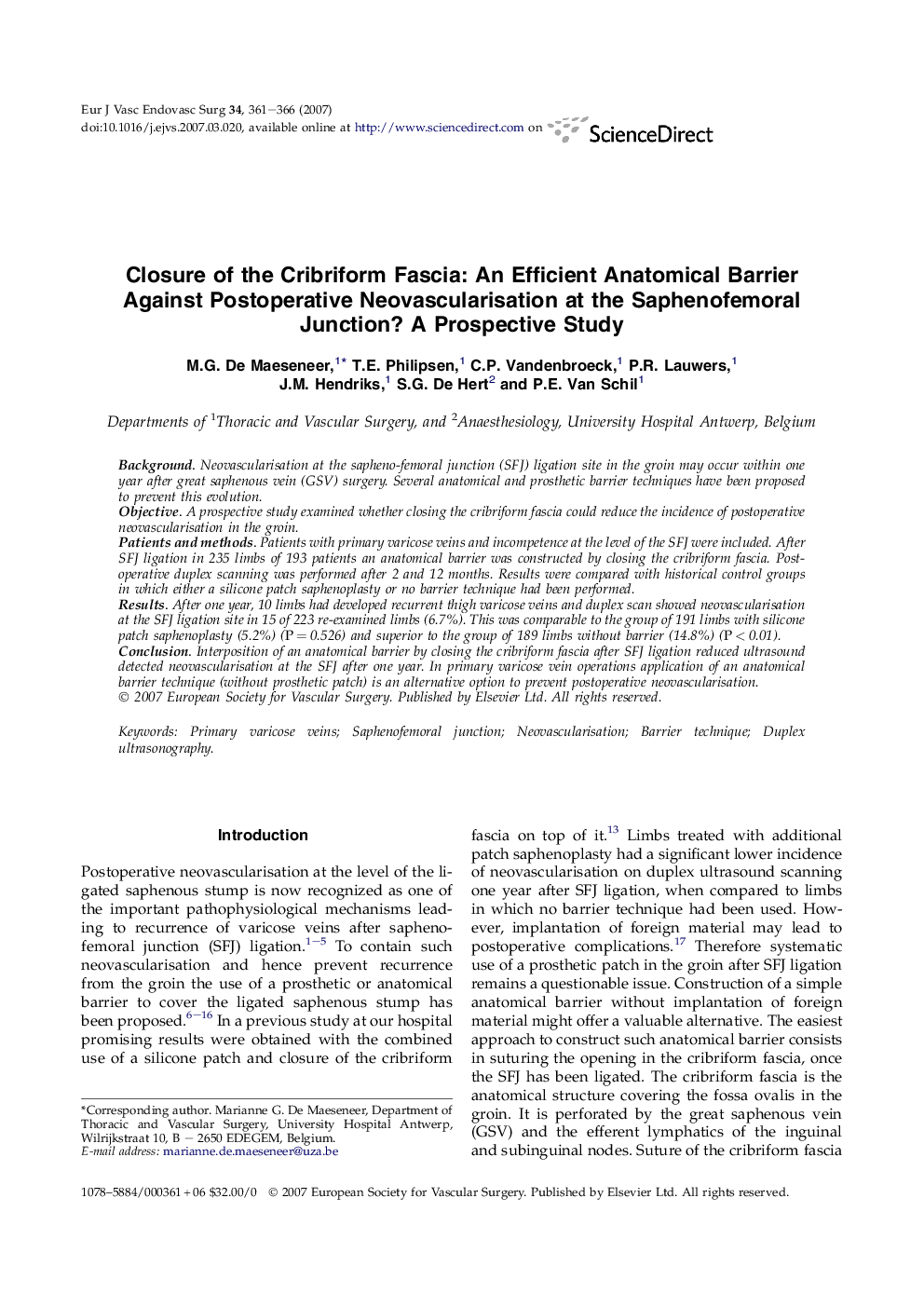| Article ID | Journal | Published Year | Pages | File Type |
|---|---|---|---|---|
| 2913882 | European Journal of Vascular and Endovascular Surgery | 2007 | 6 Pages |
BackgroundNeovascularisation at the sapheno-femoral junction (SFJ) ligation site in the groin may occur within one year after great saphenous vein (GSV) surgery. Several anatomical and prosthetic barrier techniques have been proposed to prevent this evolution.ObjectiveA prospective study examined whether closing the cribriform fascia could reduce the incidence of postoperative neovascularisation in the groin.Patients and methodsPatients with primary varicose veins and incompetence at the level of the SFJ were included. After SFJ ligation in 235 limbs of 193 patients an anatomical barrier was constructed by closing the cribriform fascia. Postoperative duplex scanning was performed after 2 and 12 months. Results were compared with historical control groups in which either a silicone patch saphenoplasty or no barrier technique had been performed.ResultsAfter one year, 10 limbs had developed recurrent thigh varicose veins and duplex scan showed neovascularisation at the SFJ ligation site in 15 of 223 re-examined limbs (6.7%). This was comparable to the group of 191 limbs with silicone patch saphenoplasty (5.2%) (P = 0.526) and superior to the group of 189 limbs without barrier (14.8%) (P < 0.01).ConclusionInterposition of an anatomical barrier by closing the cribriform fascia after SFJ ligation reduced ultrasound detected neovascularisation at the SFJ after one year. In primary varicose vein operations application of an anatomical barrier technique (without prosthetic patch) is an alternative option to prevent postoperative neovascularisation.
